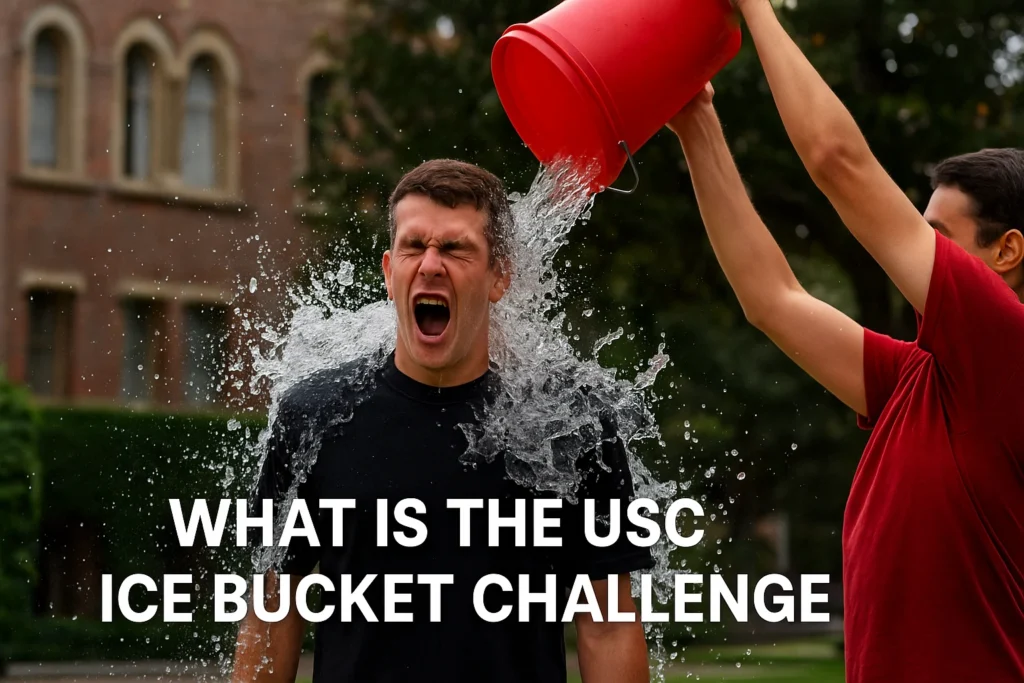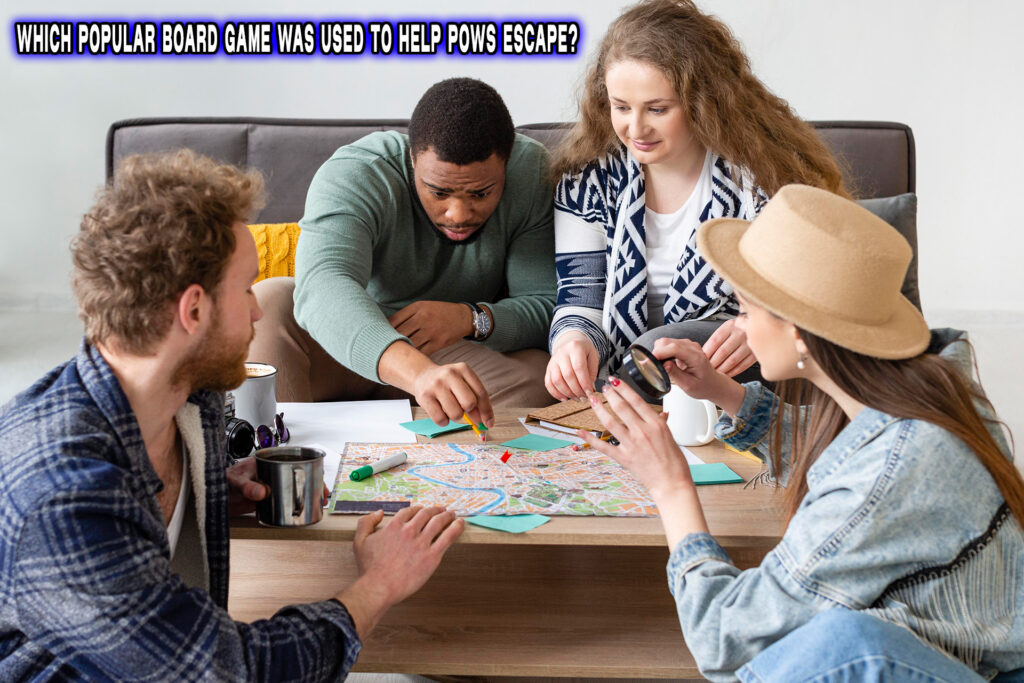Some trends online come and go. Others leave a real mark. The USC Ice Bucket Challenge is one of those rare cases. What started as a simple act turned into a movement. People did more than pour ice water on themselves. They raised money and they spread awareness. They changed how charity works online.
The University of Southern California (USC) played a key part in making the challenge viral. It added energy, students, athletes, and a strong media presence. Videos filmed on campus reached millions. The message spread fast. It reached far beyond the USC gates.
People joined in from every walk of life. Students, professors, alumni, and celebrities all took part. They laughed. They screamed from the cold. But they also gave. The money helped research and support for ALS. That is a serious disease that affects how people move and live.
This guide covers the full story. It explains what the USC Ice Bucket Challenge was and It shows how it began, what it meant, and what it changed. It helps readers see the impact, even years later. The article breaks it all down in clear steps. From a simple idea to a viral event. From cold water to real warmth.
The Origin of the Ice Bucket Challenge
The Ice Bucket Challenge began in the summer of 2014. It did not start at USC. It started as a grassroots idea. People wanted to raise awareness about ALS, also called Lou Gehrig’s disease. This illness weakens the muscles. It affects how people move, speak, and breathe. There is no cure yet.
The idea was simple. A person would dump a bucket of ice water over their head. They would record it on video. Then, they would post it online and tag three others to do the same. If someone did not take the challenge, they were asked to donate to ALS research. Most people did both.
It became a global wave. Celebrities joined. Athletes joined. News outlets covered it. Social media exploded with ice and laughter. But beneath the fun, there was a purpose. The challenge raised millions. People who had never heard of ALS now knew what it was.
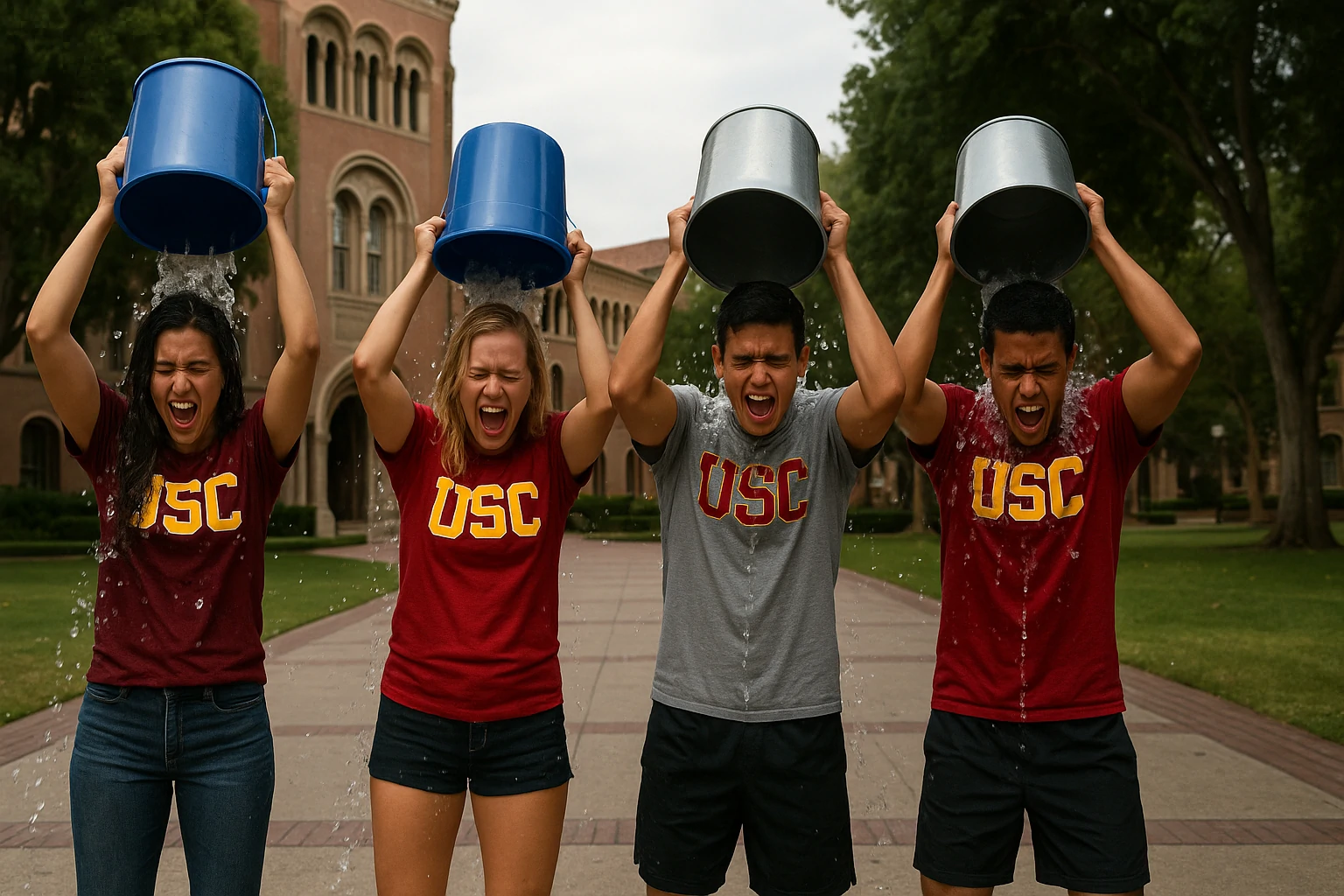
USC Ice Bucket Challenge Timeline: Key Dates and Milestones
The USC Ice Bucket Challenge took shape fast. The first video from the USC campus appeared in early August 2014. A group of students gathered near the main fountain. They dumped cold water, shouted “Fight On,” and tagged friends. That small act started a wave.
Within a week, hundreds of videos filled social media. USC athletes, professors, and staff joined the fun. Sports teams took turns. The marching band even added music to one clip. The Trojan spirit turned a fun trend into a strong show of unity.
By mid-August, national attention reached USC. Local news stations covered the campus energy. The challenge became part of USC life. Clubs and residence halls competed to raise the most money. Students tagged alumni across the world.
The final peak came near the end of the month. USC leaders accepted the challenge on camera. They thanked everyone and reminded students of the goal. The month ended with record donations and proud hearts. The movement then spread beyond campus to other schools that followed USC’s lead.
How USC Joined the Movement
USC students caught on quickly. The campus energy helped the trend grow. Sports teams took the challenge. Campus groups filmed videos. Teachers and alumni joined in. The Trojan spirit made the challenge more than a fad. It turned it into a mission.
USC’s social media team helped push the challenge forward. They shared videos and they posted links to donate, They used hashtags that reached wider audiences. Soon, other colleges followed and USC stood out because of its scale and reach.
Famous alumni took part too. That brought more attention. The media covered big names. That helped carry the message even further. USC helped take the challenge from viral video to public cause.
USC’s Academic Support and Official Endorsements
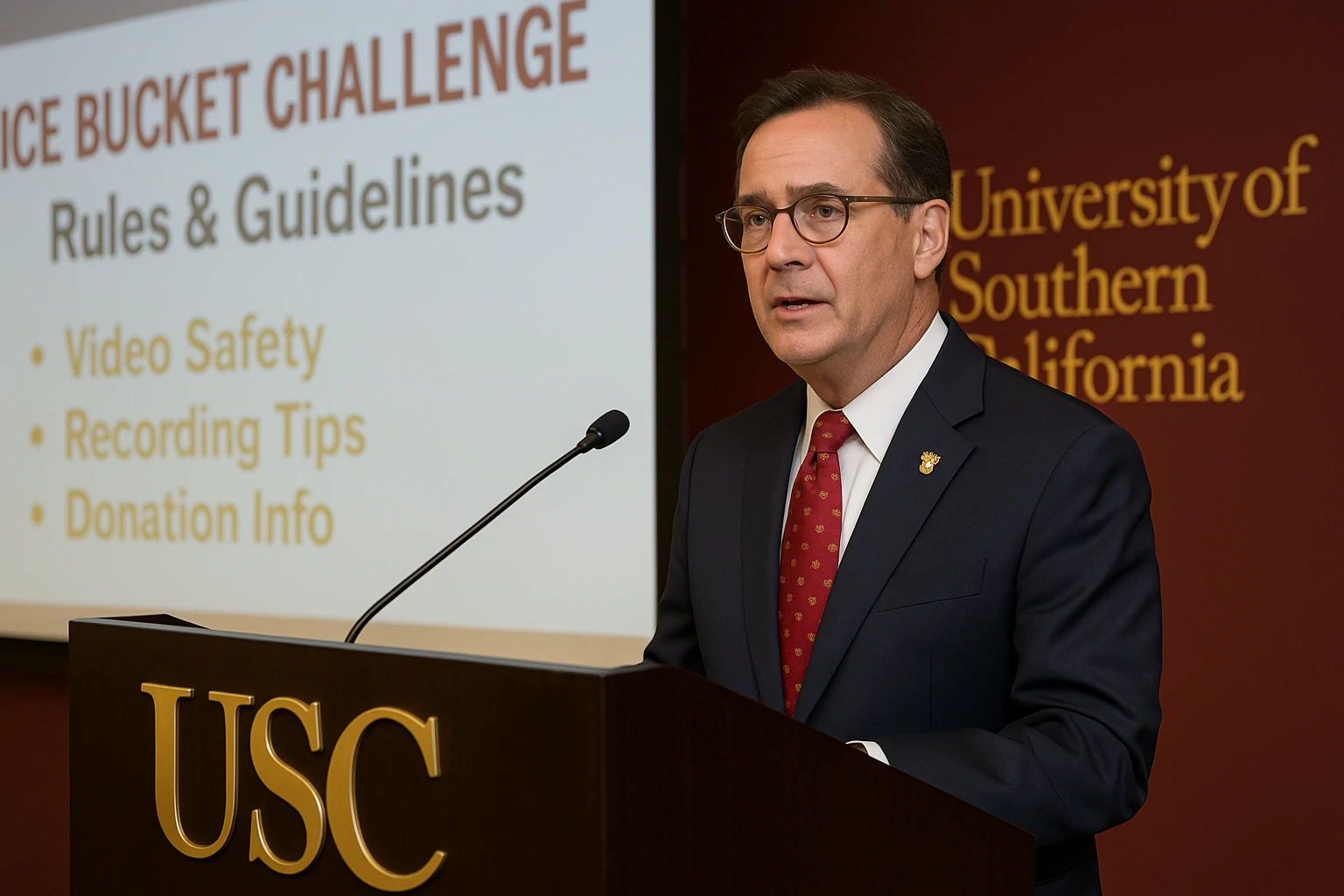
The USC Ice Bucket Challenge was not only a student trend. The university supported it in official ways. The Office of Student Affairs promoted safe participation. It shared clear rules on how to film and donate. The goal was to keep the message strong and avoid harm.
Several USC departments also joined. The Keck School of Medicine hosted a short awareness session on ALS. The Annenberg School of Communication discussed how social media drives public action. Faculty from public health praised the campaign as a model of modern charity.
USC leadership posted videos and statements that encouraged participation. They reminded everyone that the mission was about awareness and compassion. The support from academic staff gave the movement more value. It became both a learning event and a public cause.
The Message Behind the Ice
At first glance, dumping ice water might seem silly. But there was a deep message behind it. The cold shock was more than a joke. It made people feel something. It made them stop and ask why.
ALS is a disease that takes away movement. The ice water gave people a small taste of discomfort. It stood for the loss of control. It sparked empathy. People realized the challenge had a goal.
USC students helped share this message. In many videos, people explained why they did it. They spoke about ALS and they shared facts, They reminded viewers to give and That turned a viral trend into a tool for change.
Why It Worked: The Psychology Behind the USC Ice Bucket Challenge

The USC Ice Bucket Challenge succeeded because it made people feel. The cold water created a quick shock. That small moment drew attention. It mixed fun and discomfort in a way people could relate to.
Psychologists later explained that the act built empathy. When someone felt cold and stiff for a second, they understood a tiny part of what ALS patients face each day. The challenge used emotion in a smart way. It made people connect before they even donated.
It also used social pressure in a positive form. People did not want to ignore a good cause, especially when friends or professors tagged them. The public setting made them act. The sense of unity gave pride and joy.
The campaign worked because it was simple, emotional, and shareable. USC helped show that real purpose can live inside fun trends when guided with meaning.
The Fundraising Power
The USC Ice Bucket Challenge raised awareness, but it also raised money. A lot of it. Across the world, the campaign pulled in over $220 million. A large part came from college networks. USC’s huge alumni base gave big. Students gave small amounts that added up.
The funds went to the ALS Association. Some also helped other research groups. The money helped speed up studies. New genes linked to ALS were found. Labs got better tools. Doctors got better data. The world took the disease more seriously.
USC helped connect youth with cause. Many students gave for the first time. They felt proud. They saw their small act could mean something. The power of many came to life.
Where the Money Went: Real Results from the Ice Bucket Challenge

People often ask where the money went after the Ice Bucket Challenge. The answer shows real impact. The ALS Association used the funds to boost research. Labs got better tools. Scientists found new genes linked to ALS. Those discoveries opened fresh paths for treatment.
The challenge also supported care programs. Families dealing with ALS got direct help. They received wheelchairs, home devices, and personal support. Many lives improved.
Some funds went to education and outreach. More people learned how ALS works and what early symptoms look like. This helped doctors diagnose faster and guide better care.
USC students later learned about these results through campus talks and reports. It showed them that their actions mattered. The dollars raised did not vanish. They turned into real progress against a hard disease.
Social Media and Viral Reach
The USC Ice Bucket Challenge used social media better than most campaigns. Videos went up on Instagram, Twitter, Facebook, and YouTube. Hashtags like #USCIceBucketChallenge and #StrikeOutALS trended fast. USC’s digital media teams helped organize and share clips.
Students shared videos with friends at other schools. Athletes challenged rival teams. Campus leaders challenged local business owners. Each video created more. The chain kept growing.
USC used its online voice well. The school encouraged smart sharing. The message stayed clear. The giving stayed high. The internet helped, but USC helped lead it.
Celebrity Boosts from USC
Some famous USC alumni gave the challenge a boost. Stars from sports, film, and business took part. They had large followings. Their posts reached millions. Some made creative videos. Others just gave big donations.
These high-profile clips added trust. People knew it was not just a college game. It became a national and even global issue. USC’s connection to fame helped amplify the message.
The media followed these stars. That brought more news coverage. Talk shows and interviews followed. The movement felt serious and fun at the same time.
Iconic USC Ice Bucket Challenge Moments
Many USC Ice Bucket Challenge moments stood out online. One of the most popular clips showed the Trojan football team lined up after practice. They poured icy water in perfect rhythm and shouted “Fight On for ALS.” That video reached thousands in one night.
Another famous moment came from the USC marching band. They played the school theme before tipping buckets over their heads. The mix of music and laughter captured the spirit of the challenge.
Several professors joined together in front of Tommy Trojan, the campus statue. Their joint video showed how staff supported students. The clip ended with a short message about ALS and a link to donate.
Each of these videos showed what made USC special. Fun met purpose. Laughter met action. The clips still appear in online archives as examples of how one school turned a trend into lasting inspiration.
The Campus Impact
USC changed during the challenge. Students became more aware. Talks on campus shifted. People spoke about giving. Events grew around the challenge. Some dorms held water parties. Clubs hosted ALS info nights. Teachers talked about the cause in class.
Students found purpose. The videos were fun, but the cause was real. Many learned about ALS for the first time. Some students had family touched by it. The movement gave them a voice.
The campus energy created lasting change. New charity clubs formed. Giving became cool. USC showed that youth can lead.
How USC Inspired Other Schools Around the World
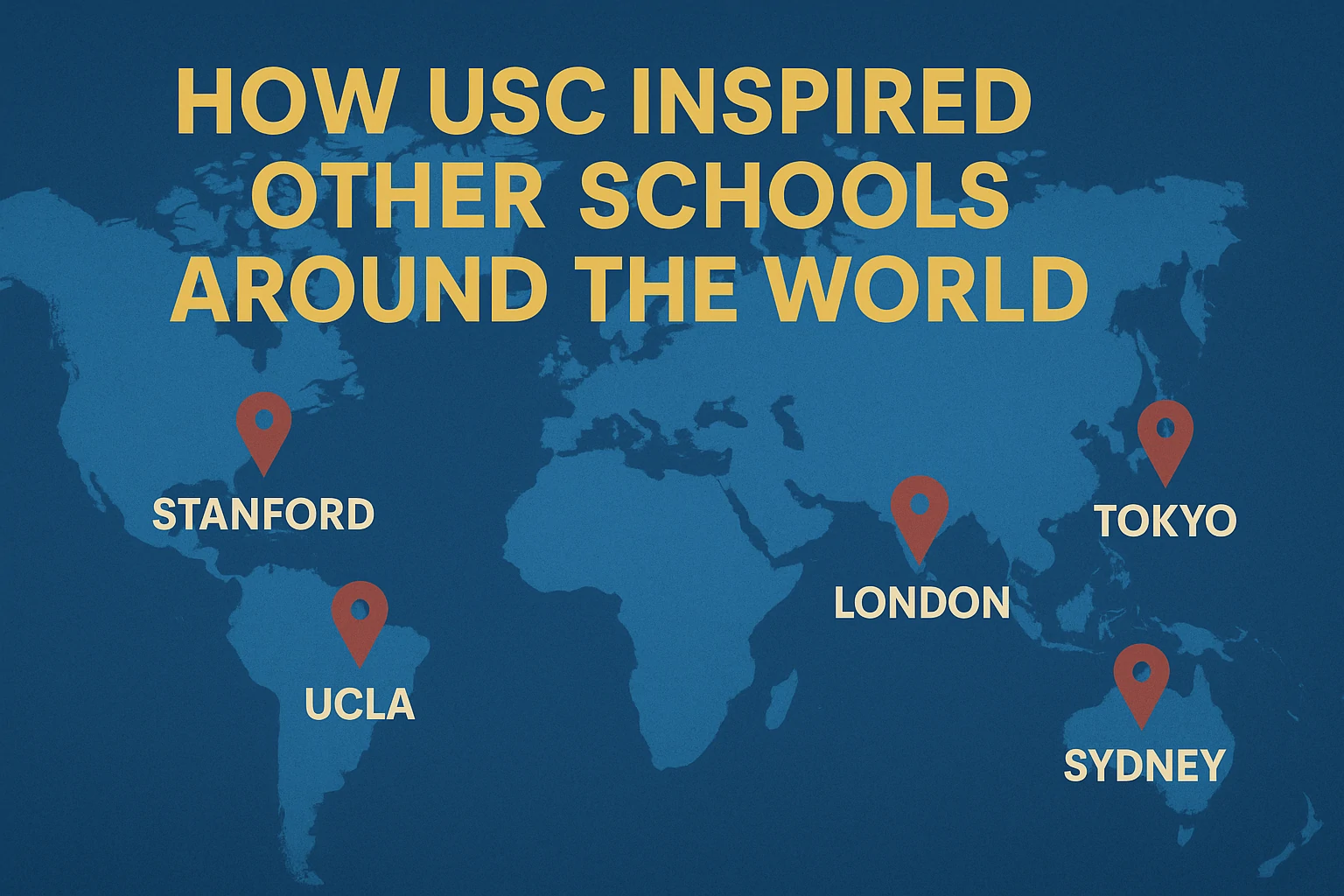
The USC Ice Bucket Challenge sparked more than just campus fun. Other colleges noticed the excitement. Soon, universities in the United States and abroad followed the same model.
Students from Stanford, UCLA, and NYU took on the challenge after watching USC’s clips. Many mentioned USC in their videos. They saw how the Trojan community mixed purpose with pride. The message reached Europe and Asia. Schools in London, Tokyo, and Sydney joined the effort.
The global wave proved that one strong campus can set an example. USC’s influence crossed borders through social media. The energy of its students inspired people worldwide to care about ALS. The spirit of action showed what youth movements can do when guided with heart.
The Legacy Today
The USC Ice Bucket Challenge peaked in 2014. But its legacy lives on. Many remember it. Some still donate to ALS every year. The funds it raised still help.
ALS research got faster. Some findings came straight from funds raised during the challenge. Awareness stayed high. The public still knows the name of the disease.
USC kept that spirit alive. Students still lead fundraisers. Media students study the campaign as a case of viral good. Teachers still refer to it in classes on marketing and health.
The challenge showed that fun can fuel change. Ice can lead to action. USC helped prove that point.
Real Faces Behind the Fight
The Ice Bucket Challenge had a face. His name was Pete Frates. He was not from USC, but his story reached it. Pete was a former baseball player from Boston College. He had ALS. He helped spark the movement.
His story touched many. USC students often named him in their videos. They thanked him. They spoke of his strength. His name became part of the cause.
There were others too. People at USC who had ALS or knew someone who did. They shared their stories. They made the challenge personal. That made the movement deeper.
A Tool for Future Campaigns
The USC Ice Bucket Challenge taught many lessons. Future causes now study it. They want to know how to use fun for good. They ask how to reach youth and they want to make giving easy and viral.
The challenge became a blueprint. Start with emotion. Use humor. Make sharing simple. Link each post to action. USC helped create that formula.
Students at USC now study it in marketing, health, and media classes. They learn what worked and why. They aim to create the next big campaign.
Critics and Challenges
Not all voices praised the challenge. Some people felt it was a stunt. They said the message got lost. Others said too much money went to media, not research. A few felt people just wanted likes.
USC faced those questions too. But many on campus defended the movement. They pointed to real dollars raised. They spoke of real awareness built. The challenge may not have been perfect. But it moved people. It helped.
The critics made the campaign sharper. USC leaders added more education. They reminded students of the goal. They helped keep the balance.
What Made USC Stand Out
Many schools joined the challenge. But USC stood out. The campus had strong digital tools. It had media experts. It had student leaders with big reach. And it had a heart for action.
The videos looked clean. The message stayed strong. The people felt involved. USC turned a fun trend into a campaign with power.
Other schools looked to USC as a guide. The model spread. The influence lasted.
Final Thoughts
The USC Ice Bucket Challenge was more than cold water and laughs. It was a moment of action and It was a campus working together, It was a school showing what young people can do.
The impact was big. ALS got funds. The public got educated. Students felt proud. The world took notice and USC helped lead the way.
The story of the challenge still matters. It shows that even a simple act can grow into a global cause. It reminds us that fun and purpose can work together andIt proves that when people act with heart, big things happen.
From a campus bucket to a global wave, the USC Ice Bucket Challenge stands as a moment to remember. It lives on in the spirit of giving, learning, and doing more together.
Common Questions (FAQs)
Question | Answer |
|---|---|
| What made the USC Ice Bucket Challenge go viral? | The strong online network at USC helped spread videos fast. Students shared clips that mixed fun, teamwork, and purpose. The idea caught attention and reached far beyond the campus. |
| Did USC students raise real money for ALS research? | Students and alumni joined hands to collect donations. Their videos inspired others to give. A large share of global funds came from connected college communities like USC. |
| Who were the most famous USC participants? | Several well-known alumni, athletes, and professors joined. Their videos reached millions and added trust to the campaign. Their support helped spread the cause worldwide. |
| Is the USC Ice Bucket Challenge still active today? | The main challenge peaked in 2014, but the spirit lives on. Fundraisers and awareness events still support ALS research each year. The story continues in classrooms and student projects. |
| What lessons did USC students learn from the challenge? | Students discovered that small actions can create big change. They learned how social media can unite people. The challenge taught them that compassion and purpose build strong communities. |
| How much money did the overall Ice Bucket Challenge raise? | The movement brought in more than two hundred million dollars worldwide. That money helped speed up ALS research and improve patient support programs. |
| Why did the Ice Bucket Challenge matter to USC? | It showed what the Trojan community stands for. Students proved that energy and kindness can make a difference. The event became a symbol of leadership, unity, and care. |
| What connection did USC have with ALS awareness after the challenge? | USC continued to support ALS programs and education. Students and teachers used the challenge as a study model in health and media courses. The cause stayed part of campus culture. |
Disclaimer: This post is for general educational purposes only and does not offer health or legal advice. Always consult a trusted expert before acting on campaign-related information.

